Sarah Emsley's Blog, page 4
March 7, 2025
“The year to appreciate Austen”
My daughter gave me a beautiful copy of Jane Austen’s Lady Susan recently, and I was glad to see this hilarious novella included in John Mullan’s guide to Austen’s writing: he says that “Lady Susan’s wittily cynical letters to her confidante Mrs Johnson (Alicia) are a devilish hoot” (“Where to start with: Jane Austen,” published in The Guardian last month).
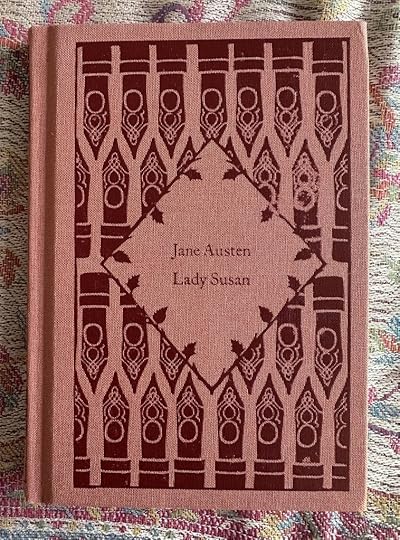
I also liked Mullan’s description of Fanny Price as a “true heroine,” who “must stay true to herself, while observing the idiocies of the entitled Bertrams, who have adopted her, and circumventing the schemes of the charming but diabolical Mary Crawford.”
As the subtitle for the piece in The Guardian says, “This is the year to appreciate Austen.” John Mullan will be a plenary speaker at the Jane Austen Society of North America AGM in Baltimore, MD, in October. The theme is “Austen at 250: No check to my Genius from beginning to end.” If you haven’t seen it already, you can find the AGM Preview Brochure on the JASNA website.
I’ll end with a photo I took in Mahone Bay, Nova Scotia, last Saturday. I’m longing for blue skies, but there’s beauty in those shades of white and grey, too.

If you enjoyed this post, I hope you’ll consider recommending it to a friend. If you aren’t yet a subscriber, please sign up.
Here are the links to the last two posts, in case you missed them:
“Sincere work and worthy aspiration and congenial friendship” (The bend in the road at Point Pleasant Park, Green Gables fabric, “Lucy. Maud.,” and the Anne of Green Gables manuscript)
“Following the path” (photos from a hike at Graves Island)
Read more about my books, including St. Paul’s in the Grand Parade, Jane Austen’s Philosophy of the Virtues, and Jane Austen and the North Atlantic, here.
Copyright Sarah Emsley 2025 ~ All rights reserved. No AI training: material on http://www.sarahemsley.com may not be used to “train” generative AI technologies.
February 28, 2025
“Sincere work and worthy aspiration and congenial friendship”
Last week, when I was looking back at photos from a hike at Graves Island, I also found this picture I took of “the bend in the road” at Point Pleasant Park here in Halifax.

As I’ve mentioned here before, L.M. Montgomery was fascinated by the idea of the bend in the road, and her Red Scrapbook includes a Notman Studio image of this same path in Point Pleasant.
Elizabeth Epperly writes in Imagining Anne: The Island Scrapbooks of L.M. Montgomery that the phrase “The Bend of the Road” appears in a poem by Grace Denio Lichfield, which Montgomery also included in her Red Scrapbook. The last chapter of Montgomery’s novel Anne of Green Gables is entitled “The Bend in the Road.”
My friend Marilyn Smulders (who wrote a guest post on “Sense and Sensibility and Sewing” for my S&S series last summer) sent me a beautiful present a few weeks ago: a small fabric bag made using “Green Gables” fabric designed by Brianna Corr Scott.

I read recently that Megan Follows, who played Anne Shirley in the 1985 adaptation of Anne of Green Gables, will play L.M. Montgomery in a new series called “Lucy. Maud.” Follows expects that those who aren’t familiar with Montgomery’s work will still enjoy watching “a show about the power of creativity as a saving grace and as a means of exploring the world and finding your voice. Even when you’re up against extraordinary odds.”
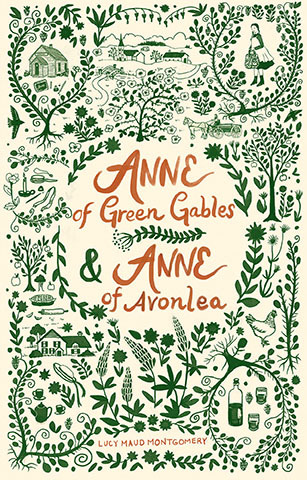
I was delighted to learn late last year that the manuscript of Anne of Green Gables has been added to a United Nations register that highlights Canadian heritage and aims to “safeguard and promote access to documentary heritage of universal value.”
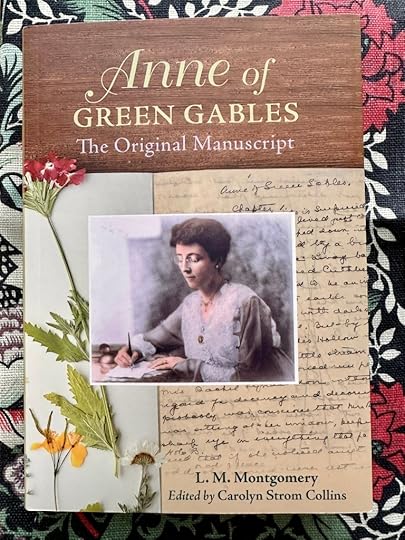
The original manuscript of Anne of Green Gables, published by Nimbus, was edited by Carolyn Strom Collins and copyedited by Marianne Ward (who wrote a guest post for my LMM at 150 series last fall: “L.M. Montgomery and Emily Carr, Worshippers of the Woods”).
“Dear old world,” Anne murmurs near the end of the last chapter of the novel, “you are very lovely, and I am glad to be alive in you.” Although her plans for the future have changed, she believes that “The joy of sincere work and worthy aspiration and congenial friendship were to be hers; nothing could rob her of her birthright of fancy or her ideal world of dreams.”
If you enjoyed this post, I hope you’ll consider recommending it to a friend. If you aren’t yet a subscriber, please sign up!
Here are the links to the last two posts, in case you missed them:
“Following the path” (photos from a hike at Graves Island)
Adjoa Andoh’s tribute to Jane Austen (Andoh praises “the bite of the Austen voice”)
Read more about my books, including St. Paul’s in the Grand Parade, Jane Austen’s Philosophy of the Virtues, and Jane Austen and the North Atlantic, here.
Copyright Sarah Emsley 2025 ~ All rights reserved. No AI training: material on http://www.sarahemsley.com may not be used to “train” generative AI technologies.
February 21, 2025
“Following the path”
“Write the way you can and not the way you think you’re supposed to,” says Susanna Clarke, author of Jonathan Strange & Mr. Norrell and, most recently, The Wood at Midwinter. “I’ve only ever had any success by doing my own weird thing, following the path that’s in front of me.”
Clarke sounds like Jane Austen to me: “I must keep to my own style & go on in my own Way,” Austen wrote to the Prince Regent’s librarian, James Stanier Clarke, in 1816. “And though I may never succeed again in that,” she said, “I am convinced that I should totally fail in any other.” (Stanier Clarke had suggested she write a “Historical Romance illustrative of the History of the august house of Cobourg.” You can see photos of Austen’s letter on the website of Jane Austen’s House Museum.)
Here’s what I saw on the (literal, rather than metaphorical) path in front of me on a hike at Graves Island, on the south shore of Nova Scotia, a couple of months ago. The sky was overcast when we set out, but by the time we had hiked around the island, the sun had come out.
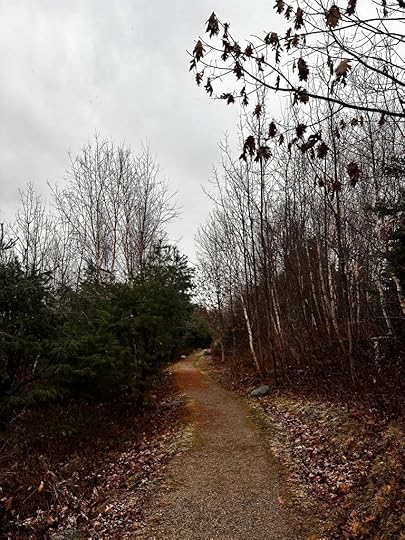

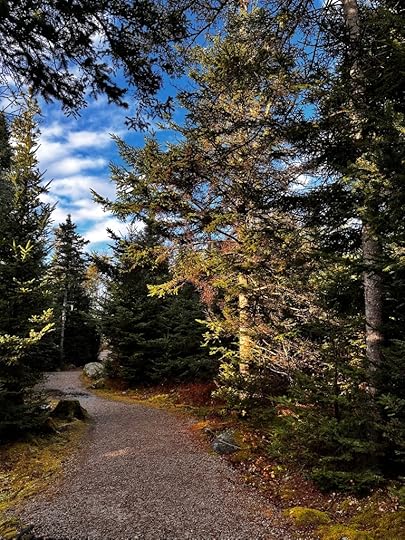
We’ve had a great deal of snow and ice here in Nova Scotia recently, and I enjoyed looking back at these photos from a time when the hiking trails were still clear. I’m looking forward to visiting Graves Island and other favourite hiking spots again before too long. These parks are such a precious resource.
If you enjoyed this post, I hope you’ll consider recommending it to a friend. If you aren’t yet a subscriber, please sign up!
Here are the links to the last two posts, in case you missed them:
Adjoa Andoh’s tribute to Jane Austen (Andoh praises “the bite of the Austen voice”)
“A more convincing consolation” (on reading Austen for comfort)
Read more about my books, including St. Paul’s in the Grand Parade, Jane Austen’s Philosophy of the Virtues, and Jane Austen and the North Atlantic, here.
Copyright Sarah Emsley 2025 ~ All rights reserved. No AI training: material on http://www.sarahemsley.com may not be used to “train” generative AI technologies.
February 18, 2025
Adjoa Andoh’s tribute to Jane Austen
Adjoa Andoh, well known for playing Lady Danbury in Bridgerton, praises “the bite of the Austen voice” in the tribute she wrote for “Unexpectedly Austen,” the series I’m co-editing with Liz Philosophos Cooper for the Jane Austen Society of North America. She says, “I have yet to see a stage or film version of one of Austen’s novels that successfully communicates the wit, humour and acerbic voice of the narrator who is Austen.”
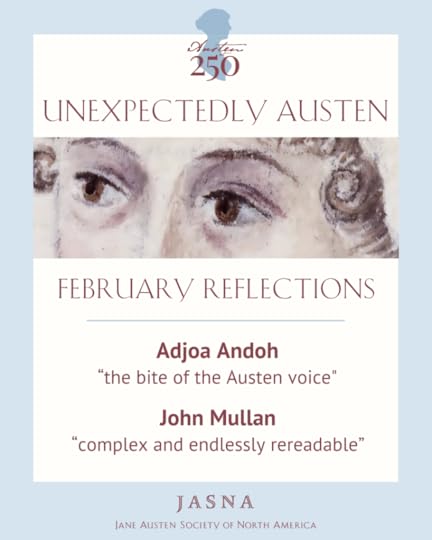
Read the full tribute in the February installment of “Unexpectedly Austen,” along with a quotation from John Mullan, Lord Northcliffe Chair of Modern English Literature at University College London, who credits his students with helping him discover “how complex and endlessly re-readable [Austen’s] apparently simple stories were.”

If you’re celebrating Jane Austen’s 250th birthday this year, I’d love to hear about your plans.
I was interested to see “Jane Austen’s England” featured in “52 Places to Go in 2025” in the New York Times. AnneLise Sorensen highlights the exhibitions and themed festivals at Jane Austen’s House, along with several other exhibitions and events. (Like many Janeites, I’m planning a trip to England this year—more on that in a future post.)
In a list of the Austen characters that have “enchanted generations of readers,” the first example given in this recent BBC article entitled “How to celebrate Jane Austen on her 250th birthday” is “the dashing John Willoughby.” I think I would have expected to see one of the heroines or Mr. Darcy named first. Last weekend, The Guardian featured a list of favourite Austen characters chosen by Helen Fielding, Olivia Williams, Greta Scacchi, Andrew Davies, and several others. If you were making a list of “Enchanting Austen Characters” or “Favourite Austen Characters,” who would appear at the top? I’m with Abi Morgan, who says, “I’m choosing the most obvious Austen character, Elizabeth Bennet, but I’d be lying if I chose anyone else.”
One of the new books about Austen that I’m especially excited about this year is Devoney Looser’s Wild for Austen: A Rebellious, Subversive, and Untamed Jane, an exploration of “the fascinating and fantastical journey her legacy has taken over the past 250 years.” I’ve pre-ordered and can’t wait to read it. Read more about the book in this recent post by Laurel Ann Nattress of Austenprose.
Devoney wrote a guest post on the controversial topic of “Rears and Vices” for the series I hosted celebrating the 200th anniversary of Mansfield Park. She says that Mary Crawford “coyly invites her audience of listeners (just as Austen invites her audience of readers) to conclude precisely what she says she doesn’t want to be suspected of—that she’s uttering a pun. The question for us as readers today is, ‘Precisely how off-color is her pun?’”

If you enjoyed this post, I hope you’ll consider recommending it to a friend. If you aren’t yet a subscriber, please sign up!
Here are the links to the last two posts, in case you missed them:
“A more convincing consolation” (on reading Austen for comfort)
“My winter walk” (Mr. Woodhouse, Cowper, Point Pleasant Park in winter)
Read more about my books, including St. Paul’s in the Grand Parade, Jane Austen’s Philosophy of the Virtues, and Jane Austen and the North Atlantic, here.
Copyright Sarah Emsley 2025 ~ All rights reserved. No AI training: material on http://www.sarahemsley.com may not be used to “train” generative AI technologies.
February 7, 2025
“A more convincing consolation”
“Austen’s clear eyes and sharp nib make the predictable miraculous,” Francesca Segal says of Persuasion, which she names as one of the books on her “ultimate literary comfort reading list.” I like the distinction she makes between “solace” and “escape”: she says she doesn’t want a “temporary palliative,” but “a more convincing consolation, grounded in real life.”
“The best books,” Segal writes, “rebuild our strength so we can face reality, and maybe even fight to change it.” As Sheila Johnson Kindred and I argued in an essay on Mansfield Park several years ago, reading Austen may be both unsettling and comforting. We wrote that it is “possible to read Jane Austen just for fun, just for an escape from the stresses, and the terrors, of our own twenty-first century world. But when we read the novels attentively, we can see what Austen has to say about confronting, rather than escaping, misery. Hilary Mantel is wrong when she says that ‘No one who read it closely was ever comforted by an Austen novel.’ Reading Austen’s novels closely may well offer more comfort.”
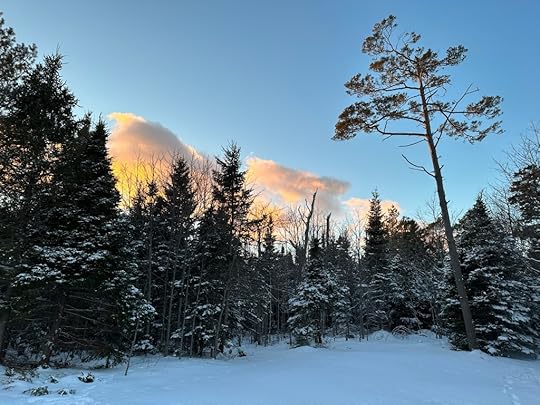

Segal’s list appeared in The Guardian last fall: “‘It will renew your faith in humanity’: books to bring comfort in dark times.”
The essay Sheila and I wrote was based on the talk we gave at the 2014 JASNA AGM in Montreal, “Among the Proto-Janeites: Reading Mansfield Park for Consolation in Halifax, Nova Scotia, in 1815.” Lady Sherbrooke, wife of Sir John Coape Sherbrooke, Lieutenant Governor of Nova Scotia, read Mansfield Park aloud to her friend Mary Wodehouse after the death of Mary’s first child.

I’m looking forward to next week’s installment of “Unexpectedly Austen,” the series of tributes I’m co-editing with Liz Philosophos Cooper. It will be posted on the JASNA website on Tuesday, and I’ll share excerpts here in next Friday’s blog post.
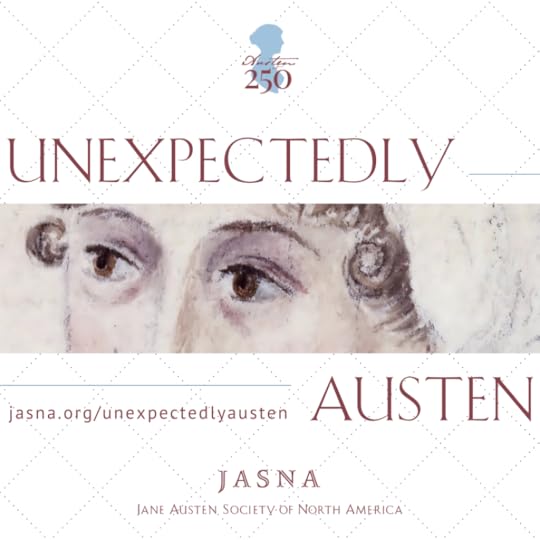
I took the photos that accompany this post on another of “my winter walks” in Point Pleasant Park.

If you enjoyed this post, I hope you’ll consider recommending it to a friend. If you aren’t yet a subscriber, please sign up!
Here are the links to the last two posts, in case you missed them:
“My winter walk” (Mr. Woodhouse, Cowper, Point Pleasant Park in winter)
“That sea of wonders” (Edith Wharton’s birthday)
Read more about my books, including St. Paul’s in the Grand Parade, Jane Austen’s Philosophy of the Virtues, and Jane Austen and the North Atlantic, here.
Copyright Sarah Emsley 2025 ~ All rights reserved. No AI training: material on http://www.sarahemsley.com may not be used to “train” generative AI technologies.
January 31, 2025
“My winter walk”
Echoing a phrase from the poetry of William Cowper, one of Jane Austen’s favourite poets, Mr. Woodhouse tells Mr. Knightley that he intends to go out and “take my three turns—my winter walk” (Emma, Volume 1, Chapter 8). I thought of Mr. Woodhouse and his winter walk when I “took a turn” about Point Pleasant Park the other day.

In The Task, Cowper says that winter smiles, “resigning all its rage / And has the warmth of May.” Although our weather here in Nova Scotia did not have the “warmth of May” that day, I think the season still seemed to be smiling.
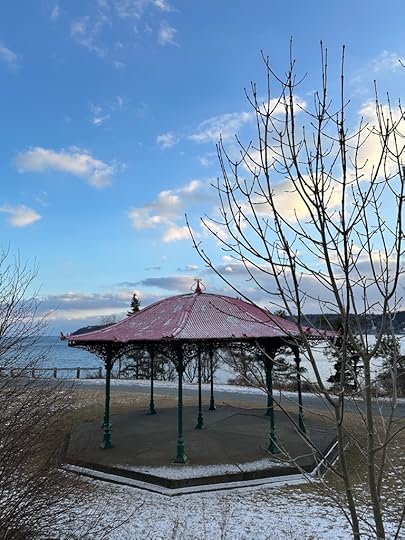

Today I also want to share a link to a recent blog post by my friend Sheila Johnson Kindred, author of Jane Austen’s Transatlantic Sister: The Life and Letters of Fanny Palmer Austen. In “Captain Charles Austen: Agent of British Diplomacy in South America,” Sheila tells the story of Jane’s youngest brother, Charles (husband of Fanny Palmer Austen), receiving a ceremonial sword as a gift from General Simon Bolivar in 1827.
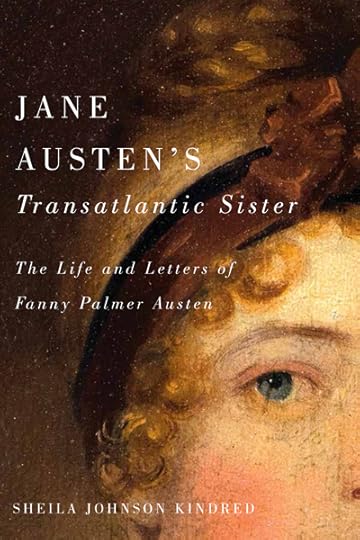
If you enjoyed this post, I hope you’ll consider recommending it to a friend. If you aren’t yet a subscriber, please sign up!
Here are the links to the last two posts, in case you missed them:
“That sea of wonders” (Edith Wharton’s birthday)
Unexpectedly Austen (a series of tributes to Jane Austen on the JASNA website, co-edited by Liz Philosophos Cooper and me)
Read more about my books, including St. Paul’s in the Grand Parade, Jane Austen’s Philosophy of the Virtues, and Jane Austen and the North Atlantic, here.
Copyright Sarah Emsley 2025 ~ All rights reserved. No AI training: material on http://www.sarahemsley.com may not be used to “train” generative AI technologies.
January 24, 2025
“That sea of wonders”
Edith Wharton was born 163 years ago today, on January 24, 1862, in New York City. I’ve been rereading her autobiography, A Backward Glance (1933), enjoying her descriptions of the books she read when she was young. Forbidden to read a novel without her mother’s permission, she writes that the “wide expanse of the classics, English, French and German” stretched before her instead, and she “plunged at will” into “that sea of wonders.”
Wharton says, “I was a healthy little girl who loved riding, swimming and romping; yet no children of my own age, and none even among the nearest of my grown-ups, were as close to me as the great voices that spoke to me from books.” She didn’t discuss this friendship with books and authors with anyone else: “There was in me a secret retreat where I wished no one to intrude, or at least no one whom I had yet encountered.”
I’ve also been reading/rereading articles on Wharton, including an essay from a couple of years ago by Emily J. Orlando, who writes of Wharton’s “uncanny anticipation of our culture,” suggesting that she “seems to have foreseen the excesses, obsessions, and spectacles of our current moment.”
I like Emily Temple’s tribute to Wharton and dogs, which includes details about Wharton’s dog cemetery; her dog ghost story, “Kerfol”; the poetry she wrote about dogs; and her work as an animal activist. Wharton wrote of her “deep, instinctive understanding of animals,” and believed she could communicate with her dogs. After her dog Linky died in 1937, she told a friend that “no one had such wise things to say as Linky.”
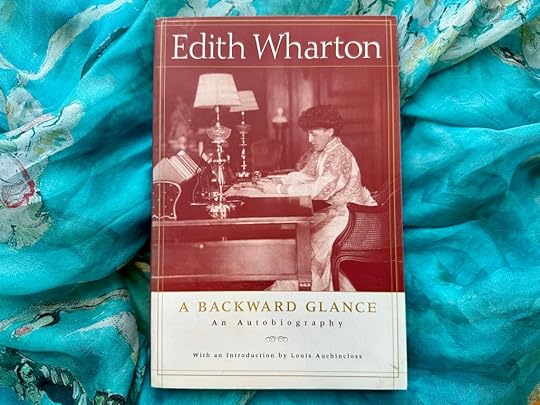
Here are a couple of other things I’ve come across recently, from my friends Shawna Lemay and Renée Hartleib, and saved to share with you.
Shawna says in a blog post that “Art helps, art is needed, art is necessary. Art is non-negotiable if we’re to get through.” Quoting a famous passage from Henry James’s story “The Middle Years,” in which the novelist Dencombe speaks of “work[ing] in the dark,” she writes that “we’re always working in the dark. We never know quite what will happen next. Still life reminds us to stay. Breathe. Attend. . . . Don’t give up. Don’t stop.”
(Shawna wrote “Of Sandwiches and Obligations” for my Sense and Sensibility blog series last summer.)
Those of you who are engaged in a writing project (or may be considering embarking on one) might be interested in a new program Renée’s offering, the Short Story Intensive. (If you’ve been reading my blog for a while, perhaps you’ll remember the guest post she wrote on “Words that Heal” in 2023.) In the Short Story Intensive, Renée’s “aim is to help writers take a short piece of fiction, poetry, or memoir to the next level, and one step closer to publication.” She says, “I love working one-on-one with writers and this new offering is short, simple, personal, and affordable.”
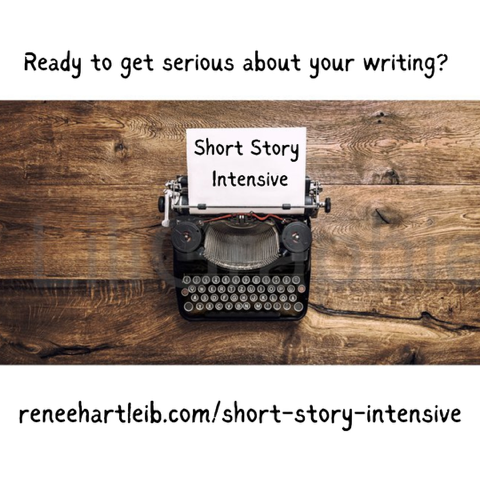
I’m sending you all best wishes for good conversations with books, pets, and artists—past, present, and future. Thanks for reading, and I’ll see you here next Friday.

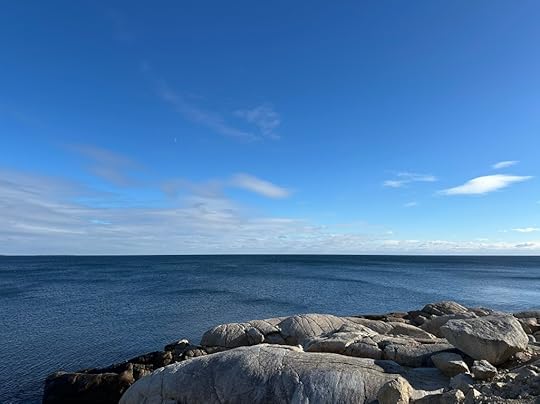
If you enjoyed this post, I hope you’ll consider recommending it to a friend. If you aren’t yet a subscriber, please sign up!
Here are the links to the last two posts, in case you missed them:
Unexpectedly Austen (a series of tributes to Jane Austen on the JASNA website, co-edited by Liz Philosophos Cooper and me)
“I bought maps in every town” (Nashville photos and Ann Patchett’s first novel, The Patron Saint of Liars)
Read more about my books, including St. Paul’s in the Grand Parade, Jane Austen’s Philosophy of the Virtues, and Jane Austen and the North Atlantic, here.
Copyright Sarah Emsley 2025 ~ All rights reserved. No AI training: material on http://www.sarahemsley.com may not be used to “train” generative AI technologies.
January 17, 2025
Unexpectedly Austen
This year is the 250th anniversary of Jane Austen’s birth, and readers and fans around the world are celebrating her life, works, and legacy. As part of the celebrations, Liz Philosophos Cooper and I are co-editing a series of tributes to and reflections on Austen by well-known members of the public. Each month, we’ll share a new installment of the series, “Unexpectedly Austen,” on the Jane Austen Society of North America website.
In the January installment, Pulitzer Prize-winning author Anna Quindlen writes that “Jane Austen is, and will always be, the improbable inimitable immortal,” and NBA star Dwyane Wade reflects on the enduring appeal of Pride and Prejudice and on “how a love story from Regency England could be relevant to a 21st century basketball player from the Southside of Chicago.”
Read the tributes in full on the JASNA website.
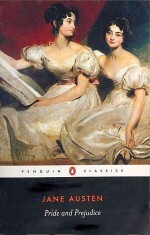
I’m excited about the series, and I hope you’ll follow along! I wish I could tell you all the names of the people who responded to our invitation to write tributes and reflections, but I’d better keep that a secret for now. I’ll share links to the monthly installments here on my blog.
As I’ve mentioned here in the past, to celebrate the 250th JASNA is offering free one-year Student Memberships.
I hope the new year is off to a good start for all of you, and I’m wishing you peace and happiness in the months ahead. I’ll end today’s post with some photos from a recent hike with my husband at Herring Cove Provincial Park.
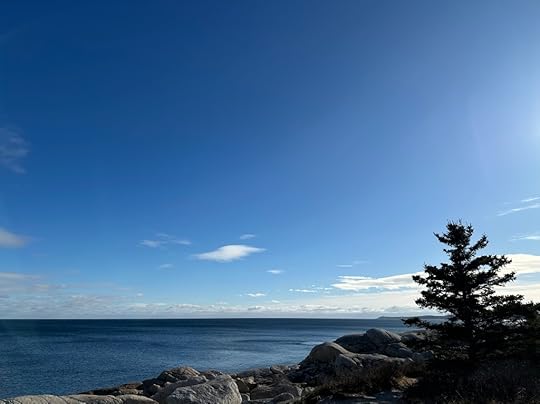


If you enjoyed this post, I hope you’ll consider recommending it to a friend. If you aren’t yet a subscriber, please sign up!
Here are the links to the last two posts, in case you missed them:
“I bought maps in every town” (Nashville photos and Ann Patchett’s first novel, The Patron Saint of Liars)
“The bells rang back through the woods” (Christmas in L.M. Montgomery’s Emily of New Moon)
Read more about my books, including St. Paul’s in the Grand Parade, Jane Austen’s Philosophy of the Virtues, and Jane Austen and the North Atlantic, here.
Copyright Sarah Emsley 2025 ~ All rights reserved. No AI training: material on http://www.sarahemsley.com may not be used to “train” generative AI technologies.
December 27, 2024
“I bought maps in every town”
In Ann Patchett’s first novel, The Patron Saint of Liars, Rose Clinton loves to drive. Although she “bought maps in every town,” Rose says, “I was never interested in where I might go, only the contours of the roads, the kind of lines they made, their shape and width, the views I imagined they would afford me.”

The bend in the road on I-40, somewhere between Nashville and Memphis (in the novel, Rose spends a lot of time on Highway 40)
In October, when I visited Nashville briefly, before and after my visit with my sister and her family in Oxford, Mississippi, I bought a copy of the novel at the bookstore Patchett owns, Parnassus Books.
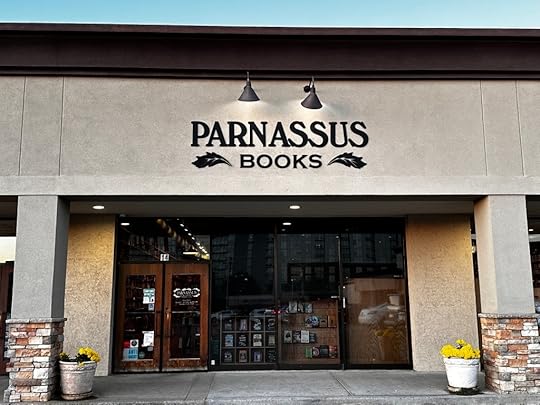
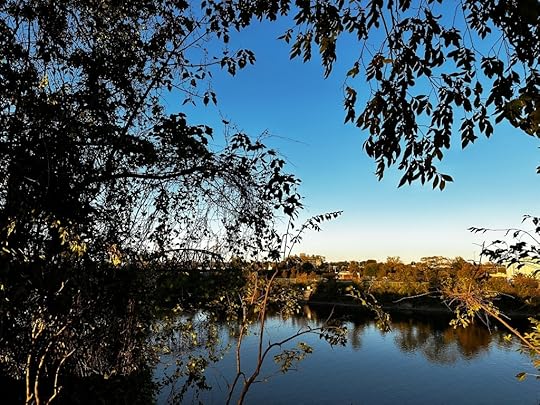
Cumberland River
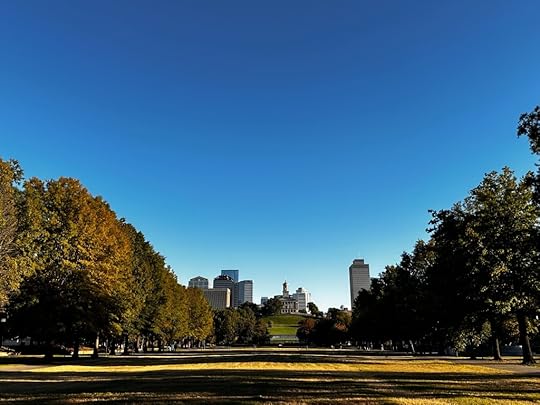
Tennessee State Capitol and Bicentennial Capitol Mall State Park
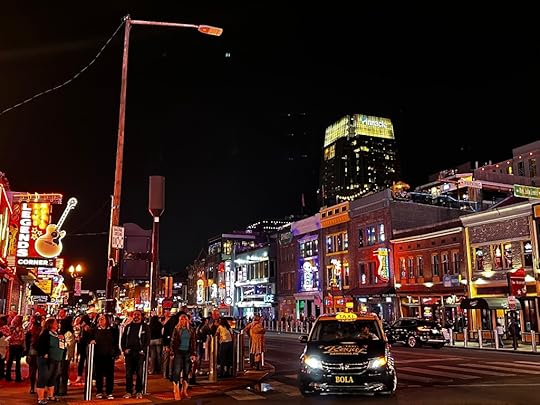
Honky Tonk Highway

The Hermitage Hotel

Rose says, “People think you have to be going someplace, when, in fact, the ride is plenty.”

I enjoyed reading The Patron Saint of Liars on the flight home to Nova Scotia.
Thanks to all of you for reading my blog this year, and especially for celebrating Sense and Sensibility and L.M. Montgomery’s 150th birthday with me. I’m going to take some time off, and I’ll be back with a new post later in January. Best wishes to all of you for a wonderful new year, and for whatever lies beyond the bend in the road.
If you enjoyed this post, I hope you’ll consider recommending it to a friend. If you aren’t yet a subscriber, please sign up!
Here are the links to the last two posts, in case you missed them:
“The bells rang back through the woods” (Christmas in L.M. Montgomery’s Emily of New Moon)
“She placed her bonnet on his head & ran away” (my essay from the 2024 JASNA AGM, published in Persuasions On-Line)
Read more about my books, including St. Paul’s in the Grand Parade, Jane Austen’s Philosophy of the Virtues, and Jane Austen and the North Atlantic, here.
Copyright Sarah Emsley 2024 ~ All rights reserved. No AI training: material on http://www.sarahemsley.com may not be used to “train” generative AI technologies.
December 23, 2024
“The bells rang back through the trees”
On L.M. Montgomery’s 150th birthday, when I was reading passages at random from her novels and journals, I came across Emily Starr’s letter to her father about Christmas at New Moon and the moment at which she “didn’t feel like a stranger among the Murrays any more” (Emily of New Moon, Chapter 20). It’s an amusing letter—for example, she says her Aunt Elizabeth “looked quite handsome and I was proud of her. You like your relations to look well even if you don’t like them.” And the ending is beautiful.


Emily begins by saying that “Christmas is over. It was pretty nice. I never saw so many good things cooked all at once.” After all the celebrations have ended, Uncle Wallace asks everyone to “‘think for a few moments of those who have gone before.’”
Emily says, “I liked the way he said it—very solemnly and kind. It was one of the times when I am glad the blood of the Murrays flows in my vains. And I thought of you, darling Father, and Mother and poor little Mike and Great-great-Grandmother Murray, and of my old account book that Aunt Elizabeth burned, because it seemed just like a person to me. And then we all joined hands and sung ‘For Auld Lang Syne’ before they went home.” This is the moment at which—despite her sorrows, and her anger at Aunt Elizabeth—Emily no longer feels like a stranger in her new home.
At the end, she writes that when the visiting relatives left the house, “Aunt Laura and I stood out on the porch to watch them go. Aunt Laura put her arm around me and said, ‘Your mother and I used to stand like this long ago, Emily, to watch the Christmas guests go away.’ The snow creaked and the bells rang back through the trees and the frost on the pighouse roof sparkled in the moonlight. And it was all so lovely (the bells and the frost and the big shining white night) that the flash came and that was best of all.”
Merry Christmas to those of you who will be celebrating this week. I hope you’ll hear (or imagine) bells ringing or snow creaking or catch a glimpse of frost sparkling in the moonlight. Most of all, whether you’re celebrating Christmas or not and whether you’re in a snowy, frosty part of the world or not, I hope you’ll experience some of the peace that Emily describes here.
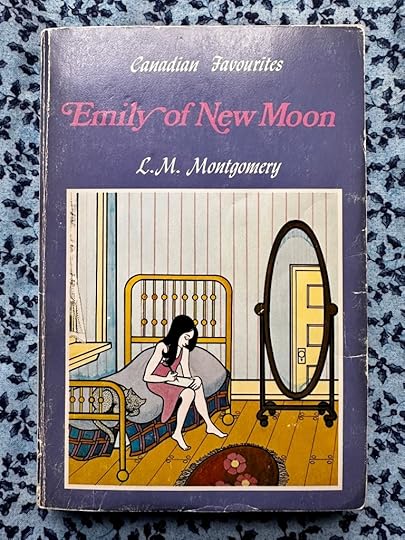
I’ll add a few photos my friend Kate Scarth took at Christmas at Green Gables in Cavendish, PEI, on L.M. Montgomery’s 150th birthday. Many thanks to Kate for sending these lovely pictures and for giving permission to share them with you here.
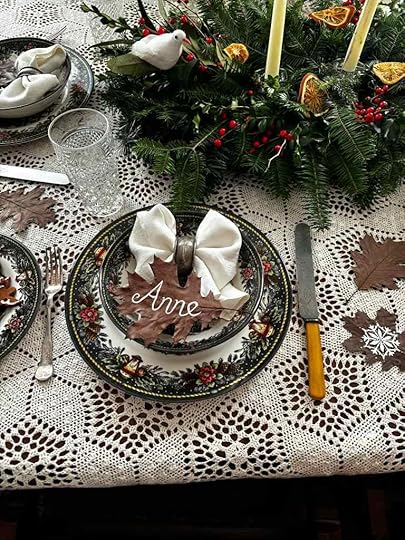


And I’ll end this post with a photo of the wreath I made at a workshop in Lunenburg recently, hosted by Svenja Dee of Tulipwood, along with photos of the holiday lights in the Halifax Public Gardens.

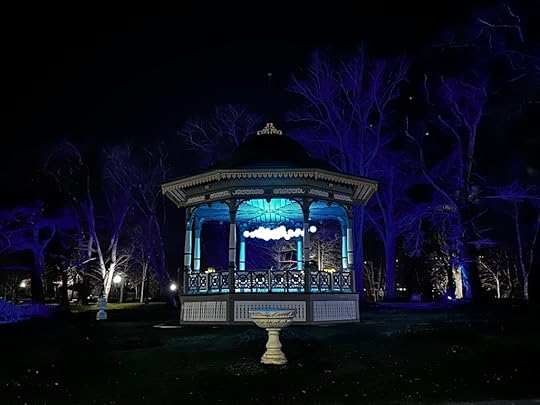
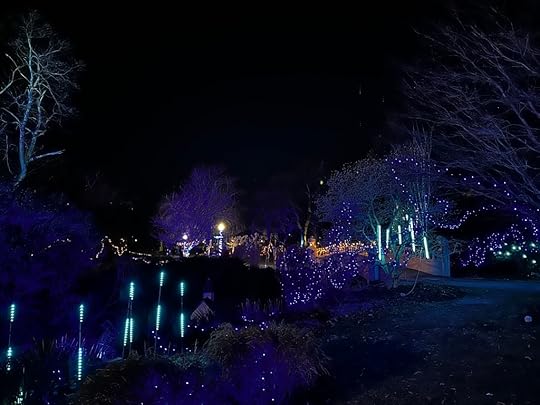

If you enjoyed this post, I hope you’ll consider recommending it to a friend. If you aren’t yet a subscriber, please sign up!
Here are the links to the last two posts, in case you missed them:
“She placed her bonnet on his head & ran away” (my essay from the 2024 JASNA AGM, published in Persuasions On-Line)
Happy 249th Birthday to Jane Austen!
Read more about my books, including St. Paul’s in the Grand Parade, Jane Austen’s Philosophy of the Virtues, and Jane Austen and the North Atlantic, here.
Copyright Sarah Emsley 2024; PEI photos copyright Kate Scarth 2024 ~ All rights reserved. No AI training: material on http://www.sarahemsley.com may not be used to “train” generative AI technologies.



